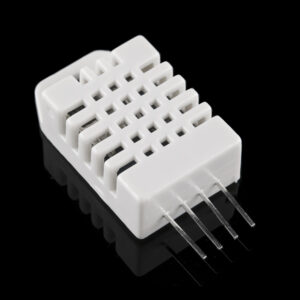 The fiber Bragg grating distributed temperature sensing on gas-insulated line spacer influences surfaces charge accumulation. Nevertheless, it is very difficult to perform the DTS measurement because the traditional electric sensors have huge dimensions, they are difficult to multiplex and highly sensitive to electromagnetic interference.
The fiber Bragg grating distributed temperature sensing on gas-insulated line spacer influences surfaces charge accumulation. Nevertheless, it is very difficult to perform the DTS measurement because the traditional electric sensors have huge dimensions, they are difficult to multiplex and highly sensitive to electromagnetic interference.
Thus, a distributed temperature sensing system of the GIL spacer based on the technology of the optical frequency domain reflectometry was designed to solve the challenges. The operation of the DTS system is based on the ultra-weak fiber Bragg grating or FBG technology to change single-mode optical fiber because of its higher signal-noise ratio.
It should be noted that the distributed temperature sensing also used the demodulation technique to compensate for the nonlinear frequency tuning errors caused by the unstable tunable laser. Therefore, the DTS system allows determining the connection between the space temperature and the wavelength shift during the calibration test.
Additionally, the distributed temperature sensing includes the application of the data processing technique for 3D surface temperature on a cone-type spacer. Finally, the DTS system based on FBG technology enables to obtain efficiently high-resolution temperature measurements on the spacer surface with the help of the optical frequency domain reflectometry, which is virtually impossible to perform with the traditional electric temperature sensing systems.
Nowadays the technology of direct current transmission with the gas-insulated line is an effective way due to its low electrical losses compared with, for example, AC transmission. That is why the distributed temperature sensing is considered to be a key factor that should be known first.
To be more precise, the disadvantages of traditional electric sensing systems such as dimensions, multiplexing, and sensitivity to EMI are solved by optical fiber sensing in electrical engineering. Fiber Bragg grating technology is a precise optical temperature sensing technique widely applied. But there are some limits in the multiplexing ability of conventional FBG sensors.
The new distributed temperature sensing system includes ultra-weak fiber Bragg gratings providing a reflectivity of only 0.1% compared to the conventional FBG sensors. Compared to the optical frequency domain reflectometry based on the Rayleigh technology, “ultra-weak FBG can achieve higher signal-noise ratio since the reflection of ultra-weak FBG sensor is much higher than the backscattering in the optical fiber”.
Optromix is a manufacturer of innovative fiber optic products for the global market. The company provides the most technologically advanced fiber optic solutions for the clients. Optromix produces a wide range of fiber optic devices, including cutting-edge customized fiber optic Bragg grating product line and fiber Bragg grating sensor systems. Moreover, Optromix is a top choice among the manufacturers of fiber Bragg grating monitoring systems. If you have any questions, please contact us at info@optromix.com

